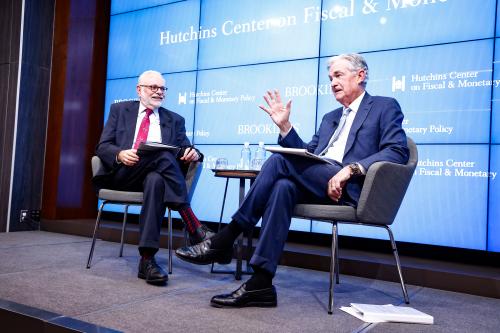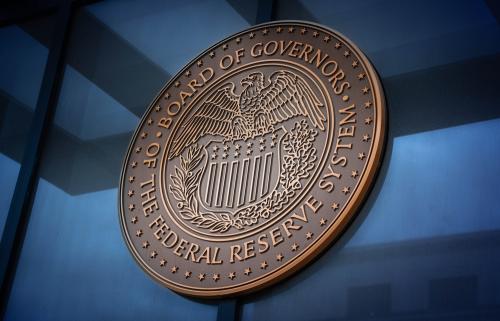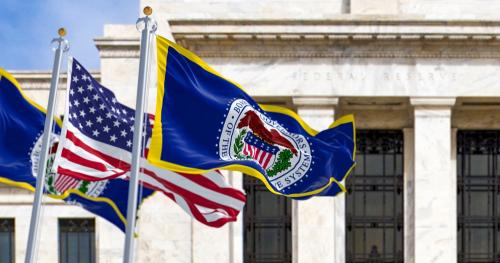This blog is a summary of a January 12, 2023 discussion on Twitter Spaces. Quotes have been edited for clarity. You can listen to the full conversation on Twitter here.
The Consumer Price Index (CPI) declined 0.1% in December on a seasonally adjusted basis according to the latest report from the Bureau of Labor Statistics with year-over-year inflation falling to 6.5%. On the morning of the release, Brookings once again convened experts David Wessel (The Hutchins Center on Fiscal and Monetary Policy), Wendy Edelberg (The Hamilton Project), and Justin Wolfers (The University of Michigan) to discuss the latest release.
Read key takeaways from their discussion below and listen to the full discussion on Twitter here.
GOOD NEWS BECOMING A TREND
In a report with lots of good news—including an outright decline in overall inflation—Edelberg focused on core inflation, the prices of everything except volatile food and energy and a closely watched indicator of the inflation trend. Core inflation rose 0.3% in December and 5.7% over the past 12 months. “For the last three months [core inflation] has risen at a rate of 3.1% at an annualized rate, and that is not all that far from what the Fed would target for that rate,” said Edelberg, noting that the Fed’s target for core CPI is around 2.5%, slightly higher than the Fed’s target of 2% on an alternative inflation measure (the price of personal consumption expenditures). “Keep in mind, core inflation, according to the CPI, peaked at above 10%. So 3.1% is awfully good news.” “We’re never allowed to say we’ve won the war on inflation,” added Wolfers, “But what we do get to say is we feel enormously more relieved today, and that’s been true for each of the last three inflation prints.”
GOODS PRICES CONTINUE COMING DOWN…
The latest CPI report showed that, for the third month in a row, the prices of goods fell. “I think three months of declines officially makes a trend,” said Edelberg. “That is excellent news because to my mind, this is the category where if we didn’t see outright price declines we had no hope, or little hope, of getting inflation under control without some really painful economic developments.” Goods prices should continue to be encouraging news for inflation due to moderating (but still high) consumer demand, supply chain improvements, and the Fed’s interest-rate increases, which have eased both goods demand and shelter inflation, she continued.
“Even the services side of the economy, while it’s got high rates of inflation, those rates of inflation are falling.”
AND SERVICES, TOO.
With goods prices moderating, the “inflation grumps,” as Wolfers called them, have turned their attention to services inflation, which remains more elevated—over the past three months, core services inflation has run at a 6.1% annual rate. “That’s relatively high,” said Wolfers, “but that’s down from 7.1% over the previous three months and 8.5% before that. So the point is that even the services side of the economy, while it’s got high rates of inflation, those rates of inflation are falling.” This is especially important given that the primary cost in providing services is wages, continued Wolfers. “It’s quite extraordinary that at a point in time when unemployment is at a 50-year low, that services inflation is declining and moving back towards more reasonable rates,” he said.
WHAT DOES THIS MEAN FOR WAGES AND UNEMPLOYMENT?
“Workers have lost ground.”
Wessel noted that Fed Chair Jerome Powell has expressed concern about the unemployment rate—that low unemployment would contribute to fast wage increases, making it difficult for the Fed to achieve its 2% inflation target without a rise in unemployment. But as Wolfers noted, wages have not risen as fast as prices throughout this entire inflation period. “Workers have lost ground,” he said. “It’s quite possible for workers to catch up that ground without it feeding through to prices.” Rather than just looking at unemployment, Edelberg emphasized a different labor market indicator to watch for: overall employment gains: “What I’m very confident is that we can’t continue to see employment gains of more than 200,000 every month. Given our population, given how many people want to work, that’s just not where we’re going to settle down.”
WHY IS FOOD STILL SO EXPENSIVE?
Food prices are up 10% over the last year, far more than other prices. Wessel noted that many of the explanations given—high costs of raw goods and energy due to the war in Ukraine, for example—don’t offer a satisfactory explanation of why food prices are still so high. Edelberg agreed, explaining that while commodity and energy prices have risen in the past, those factors haven’t created persistent food inflation like we’ve seen in the last year. She cited two other factors that haven’t received as much attention: Demand for food (people buying more, higher quality food) and food prices competing with other goods for which demand has also been high.
LINGERING QUESTIONS ON PRODUCTIVITY, CAPITAL, AND THE NEW NORMAL
Recent reports have shown rapid growth in employment and weak output growth, suggesting that productivity growth has been very low or even negative. Wolfers said that while productivity may well have been low during the height of the pandemic, the idea that it has remained low or negative during the recovery is “absurd.” Whether productivity is actually doing something unusual, or this is a measurement issue will have significant consequences for the labor market and wages going forward, Wolfers explained. Edelberg noted that part of this confusion may be due to the composition of the labor market: Employment gains in the last year may have just come from sectors where productivity is not as easily measured (leisure and hospitality, for example). A further concern for productivity, she added, is about the future of our capital stock – buildings, machinery, etc. The commercial business vacancy rate remains high, and businesses across the country will have to “figure out what stuff we went into the pandemic with that we no longer need,” like equipment and infrastructure that doesn’t fit with post-pandemic work model. “And that’s going to be hard for our economy to contend with,” she said.
Wolfers noted that with core inflation around 3%, many Americans will feel that the crisis has abated in the coming months. This will put added pressure on Fed policymakers as they continue to address what they see as still-elevated inflation. “I think the whole discussion is going to shift, the politics are going to shift, and the Fed is going to find itself in a very uncomfortable situation,” he said. The widespread support of Fed actions to get inflation under control, even potentially causing a minor recession, will wane as slightly-elevated inflation becomes the norm. “The broader conversation is really going to change its shape and nature as we move from the crisis period of inflation to the ‘Oh, so what,’ and even the ‘This is pretty normal,’ part of the cycle.”
The Brookings Institution is financed through the support of a diverse array of foundations, corporations, governments, individuals, as well as an endowment. A list of donors can be found in our annual reports published online here. The findings, interpretations, and conclusions in this report are solely those of its author(s) and are not influenced by any donation.
The Brookings Institution is committed to quality, independence, and impact.
We are supported by a diverse array of funders. In line with our values and policies, each Brookings publication represents the sole views of its author(s).






Commentary
6 key takeaways from the January CPI report
January 12, 2023